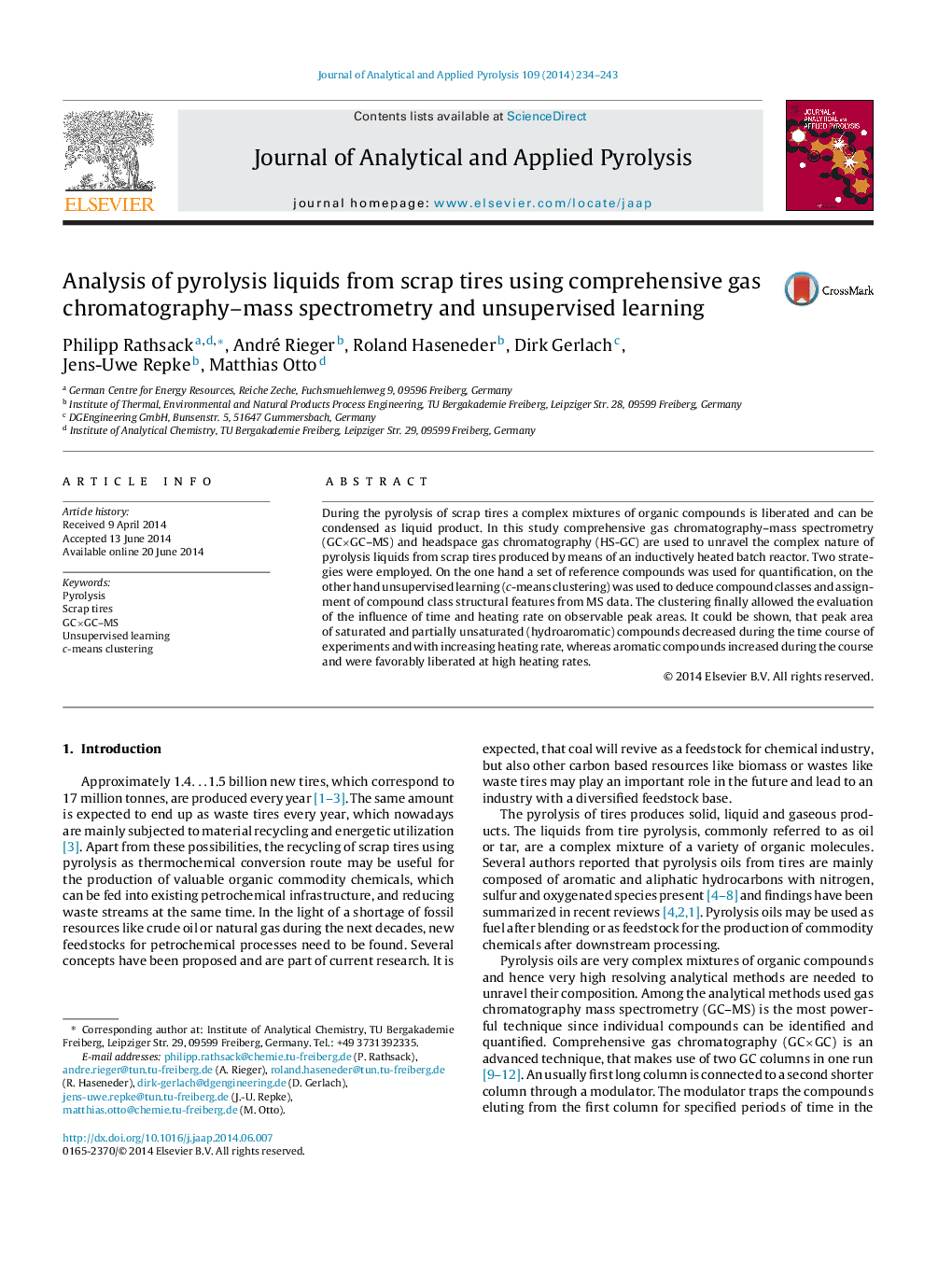| Article ID | Journal | Published Year | Pages | File Type |
|---|---|---|---|---|
| 7606915 | Journal of Analytical and Applied Pyrolysis | 2014 | 10 Pages |
Abstract
During the pyrolysis of scrap tires a complex mixtures of organic compounds is liberated and can be condensed as liquid product. In this study comprehensive gas chromatography-mass spectrometry (GCÃGC-MS) and headspace gas chromatography (HS-GC) are used to unravel the complex nature of pyrolysis liquids from scrap tires produced by means of an inductively heated batch reactor. Two strategies were employed. On the one hand a set of reference compounds was used for quantification, on the other hand unsupervised learning (c-means clustering) was used to deduce compound classes and assignment of compound class structural features from MS data. The clustering finally allowed the evaluation of the influence of time and heating rate on observable peak areas. It could be shown, that peak area of saturated and partially unsaturated (hydroaromatic) compounds decreased during the time course of experiments and with increasing heating rate, whereas aromatic compounds increased during the course and were favorably liberated at high heating rates.
Related Topics
Physical Sciences and Engineering
Chemistry
Analytical Chemistry
Authors
Philipp Rathsack, André Rieger, Roland Haseneder, Dirk Gerlach, Jens-Uwe Repke, Matthias Otto,
